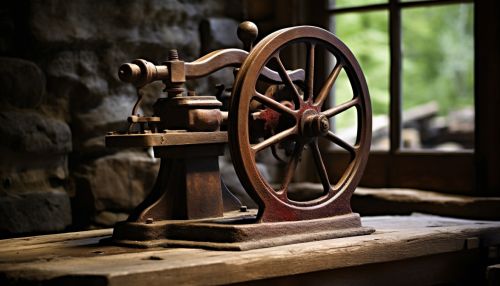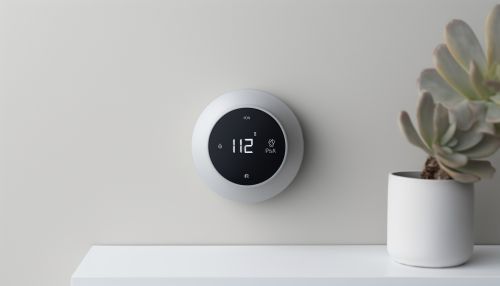Control systems
Introduction
A control system is a system of devices or set of devices that manages, commands, directs or regulates the behavior of other devices or systems to achieve a desired state. These systems are central to many technologies we use today, from home appliances like washing machines and air conditioners, to industrial processes and space exploration. Control systems can be divided into two main categories: open-loop and closed-loop.
Open-loop Control Systems
Open-loop control systems are the simplest form of control systems. The control action in these systems is independent of the output. In other words, they do not use feedback to determine if their output has achieved the desired goal. This means that the control action is pre-determined and fixed, often manually set by an operator.


A common example of an open-loop control system is a manual water pump. The operator decides when to pump the handle and how fast to pump it. The pump does not have a way to measure the amount of water it has pumped and adjust its operation accordingly.
Closed-loop Control Systems
In contrast to open-loop control systems, closed-loop control systems, also known as feedback control systems, monitor the output of the system and adjust the control action accordingly. This is done by taking the system output into consideration, which makes the control action dependent on the output. The main advantage of closed-loop control systems is their ability to reduce errors and maintain the system output within a desired range even in the presence of disturbances.


A common example of a closed-loop control system is a thermostat-controlled heating system. The thermostat measures the current temperature and adjusts the heating to maintain the temperature within a desired range.
Components of Control Systems
Control systems consist of several key components, each playing a crucial role in the overall operation of the system. These components include the controller, the plant, and the feedback mechanism.
Controller
The controller is the part of the control system that determines the system's response to changes in its environment or inputs. It does this by comparing the actual output of the system to the desired output, and then adjusting the control action accordingly.
Plant
The plant is the actual system being controlled. This could be a physical device like a motor or an entire production process in a factory. The plant takes the control action from the controller and produces an output.
Feedback Mechanism
The feedback mechanism is the part of the control system that measures the actual output of the system. This measurement is then fed back into the controller, which uses it to adjust the control action.
Types of Control Systems
There are several types of control systems, each with its own characteristics and uses. These include linear and nonlinear control systems, time-invariant and time-variant control systems, and continuous and discrete control systems.
Linear Control Systems
Linear control systems are systems in which the differential equations that describe the system are linear. This means that any change in the input will result in a proportional change in the output.
Nonlinear Control Systems
Nonlinear control systems, on the other hand, are systems in which the differential equations are not linear. This means that changes in the input do not result in proportional changes in the output.
Time-invariant Control Systems
Time-invariant control systems are systems in which the parameters of the system do not change over time. This means that the behavior of the system is consistent over time.
Time-variant Control Systems
Time-variant control systems are systems in which the parameters of the system do change over time. This means that the behavior of the system can change over time.
Continuous Control Systems
Continuous control systems are systems in which the control action can take on any value within a certain range. This means that the control action is continuous and not discrete.
Discrete Control Systems
Discrete control systems are systems in which the control action can only take on certain values. This means that the control action is discrete and not continuous.
Applications of Control Systems
Control systems are used in a wide variety of applications, from household appliances to industrial processes and space exploration. Some of the key applications of control systems include:
Home Appliances
Many home appliances use control systems to ensure they operate correctly. For example, a washing machine uses a control system to ensure it runs through its cycles correctly, and a refrigerator uses a control system to maintain the correct temperature.
Industrial Processes
Control systems are crucial in industrial processes to ensure they operate efficiently and safely. For example, a chemical plant may use a control system to monitor and adjust the chemical reactions taking place.
Space Exploration
Control systems are also crucial in space exploration. For example, a spacecraft uses a control system to navigate and maintain its course.
